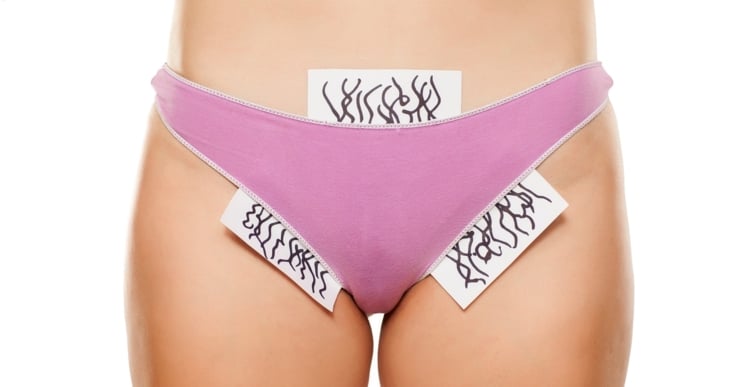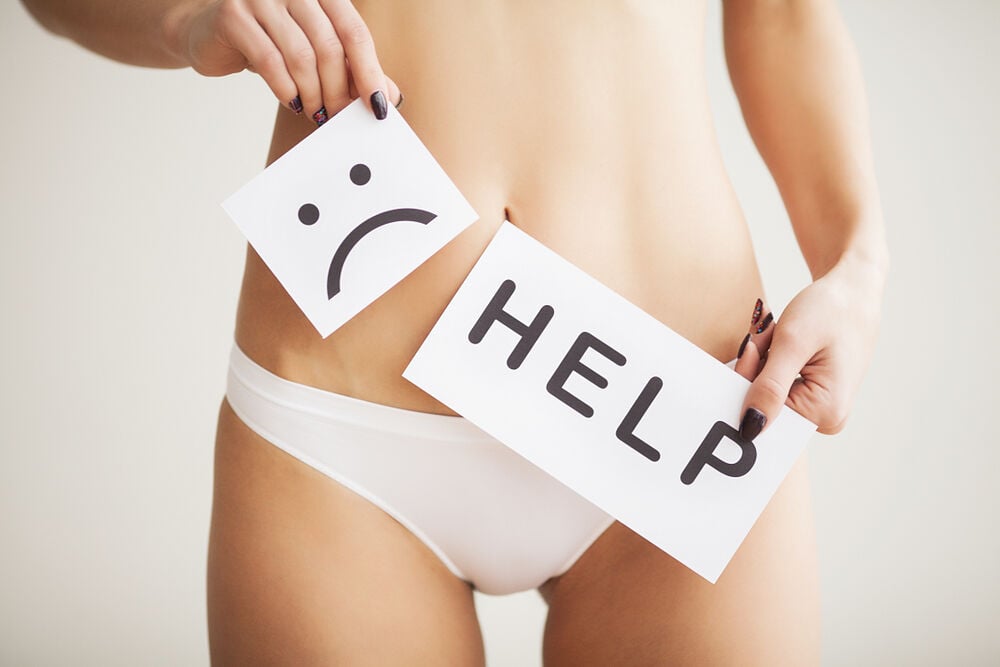Have you ever experienced ingrown hair bumps around your bikini line? They are a common condition that results from hair removal. Read this quick guide by Flo to learn the causes of ingrown pubic hair plus how to treat and prevent it.
-
Tracking cycle
-
Getting pregnant
-
Pregnancy
-
Help Center
-
Flo for Partners
-
Anonymous Mode
-
Flo app reviews
-
Flo Premium New
-
Secret Chats New
-
Symptom Checker New
-
Your cycle
-
Health 360°
-
Getting pregnant
-
Pregnancy
-
Being a mom
-
LGBTQ+
-
Quizzes
-
Ovulation calculator
-
hCG calculator
-
Pregnancy test calculator
-
Menstrual cycle calculator
-
Period calculator
-
Implantation calculator
-
Pregnancy weeks to months calculator
-
Pregnancy due date calculator
-
IVF and FET due date calculator
-
Due date calculator by ultrasound
-
Medical Affairs
-
Science & Research
-
Pass It On Project New
-
Privacy Portal
-
Press Center
-
Flo Accuracy
-
Careers
-
Contact Us
Ingrown Pubic Hair: Causes, Treatment, and Prevention


Every piece of content at Flo Health adheres to the highest editorial standards for language, style, and medical accuracy. To learn what we do to deliver the best health and lifestyle insights to you, check out our content review principles.
What are ingrown pubic hairs?
Ingrown hairs are painful and itchy bumps, and they can be especially annoying when they appear in your pubic region. But what exactly are they?
An ingrown hair occurs when the tip of the hair folds back into the skin at the root. Instead of growing up to the surface, the hair grows back into the skin, often because of shaving, waxing, or plucking.
Take a quiz
Find out what you can do with our Health Assistant
When an ingrown hair develops, you may notice a painful pink bump. You may also experience pain or itching around the area. As long as it doesn’t become infected, an ingrown hair is harmless and usually goes away without treatment.
Ingrown pubic hair causes
Hair structure and the direction of growth are factors in developing ingrown hair bumps. Although anyone can develop ingrown hairs, they are more common in people with curly hair. This is because curly hair is more likely to curl around and grow back into your skin.
You might get an ingrown hair if you:
- Shave — By shaving your hair, you’re creating sharp edges that can re-enter the skin and start to grow back.
- Tweeze — By tweezing your hair, you’re leaving a hair fragment under the skin’s surface.
- Wax
How to treat ingrown pubic hair
In most instances, ingrown pubic hair resolves on its own. However, if the ingrown hair becomes infected, you may have to see a health care provider.
If the bump becomes too itchy or painful, there are many ingrown hair treatments that can help you heal.
Stop hair removal
If the ingrown hair bump is causing you severe irritation and pain, you should stop waxing, shaving, and tweezing the hair in that area. These hair removal techniques are the major causes of ingrown pubic hair. If you stop removing your pubic hair, you’ll also lower your chances of developing a skin infection.
Retinoids
Some health experts recommend retinoids, which are derived from vitamin A, as a cure for many skin problems. Retinoids can help exfoliate your skin cells and clear up dark skin patches.
To buy retinoids, you’ll need a prescription from your health care provider. The product is not recommended if you’re pregnant as it can be dangerous to the baby.
Creams to reduce inflammation
Your health care provider may also suggest steroid creams to help reduce inflammation.
Dead skin removal
Every day, gently rub around the ingrown hair bumps in a circular motion. Use a wet washcloth or an exfoliating glove to help the ingrown hair return to the surface. Exfoliating can remove any dead skin cells, dirt, and oils that might be trapping the ingrown hair under the surface.
Pulling out the hair
You can try to pull out the ingrown hair using a sterile needle and tweezers. Use the needle to expose the tip of the hair and the tweezers to pull the end of the hair out of the skin.
Once the tip of the hair is out of the skin, avoid plucking it. To avoid an infection, don’t dig into your skin.

Infected ingrown pubic hair
In many cases, ingrown hairs disappear on their own. If you have one that doesn’t go away, it could become infected.
The signs of an infection include a darkening of the skin, swelling, redness, and painful bumps filled with pus. The chances of an infection increase if you scratch or pick at the sensitive area.
If you notice that your ingrown hair is infected, you should visit your health care provider. They can help treat it and may prescribe an antibiotic ointment or oral antibiotics.
Home remedies for ingrown hair in the genital area
There are several ingrown hair home treatment options you can try. Many people create homemade scrubs to remove dead skin cells. Some of the ingredients in an exfoliating scrub include the following:
- Sugar is a natural exfoliator. Mix a half-cup of sugar with olive oil to make a paste, and apply it in a circular motion. Let it sit for 10 minutes and wash it away with warm water.
- Coffee can help remove the top layer of skin without damaging the skin underneath.
- Salt is a wonderful choice when you want to remove rough, dry patches of dead skin.
- Baking soda can exfoliate and decrease inflammation in the skin. Mix in a teaspoon of baking soda with water, apply it on the irritated area, and rinse with cold water.
How to prevent ingrown pubic hairs
To prevent ingrown hair bumps, try these tips every time you shave.
Prepare your pubic area for shaving
Wash and rinse your pubic area with warm water before shaving. You can even shave while you’re in the shower. If you shave your pubic hair while the skin is dry, you might increase your chances of developing ingrown hairs.
- Rinse with warm water two to three minutes before shaving.
- Apply shaving cream.
- Wait for two to three minutes.
- Begin shaving.
Use a single-bladed razor
Using a single-blade razor can reduce your chances of developing ingrown pubic hair. When you use a multi-blade razor, the blades pass over your skin several times and can cut the hair beneath the skin.
A single-bladed razor moves across the skin at a gentler angle and cuts cleanly through the hairs. This reduces the chances of ingrown hair and can lead to less irritation overall.
Non-razor hair removal options
Chemical hair removers are available in different forms: creams, lotions, gels, and aerosols. The key mechanism is to disrupt the normal structure of hair so it can be pulled out easily. These products can sometimes cause skin reactions, so be sure to follow the instructions carefully. Chemical hair removers are not permanent, so the hairs will grow back.
Another option is laser hair removal. This treatment option can be expensive and sometimes painful, but it’s a long-term hair removal option. Make sure to choose a specialist who is well trained and experienced.
Electrolysis is a permanent hair removal solution. It’s done by a professional who places a tiny needle with an electric current in the hair follicle. You will need several electrolysis treatment sessions. Each treatment can last between 15 minutes and an hour.
When should you see a health care provider about ingrown pubic hair?
If your ingrown hair bumps seem infected, you should see your health care provider. Some signs of infection to look out for include:
- Swelling
- Redness
- Bumps full of pus
- Extremely painful bumps
Your health care provider will be able to help treat the infection and provide advice about preventing future ones.


Hey, I'm Anique
I started using Flo app to track my period and ovulation because we wanted to have a baby.


The Flo app helped me learn about my body and spot ovulation signs during our conception journey.


I vividly
remember the day
that we switched
Flo into
Pregnancy Mode — it was
such a special
moment.
Real stories, real results
Learn how the Flo app became an amazing cheerleader for us on our conception journey.




